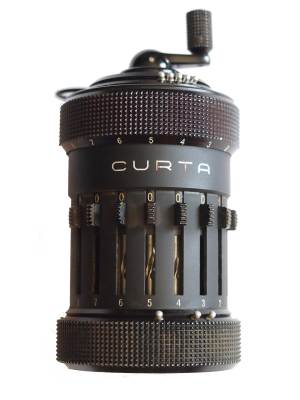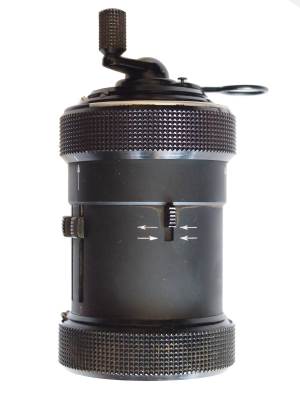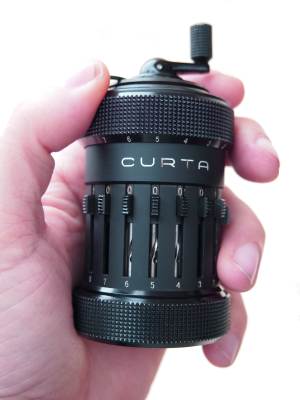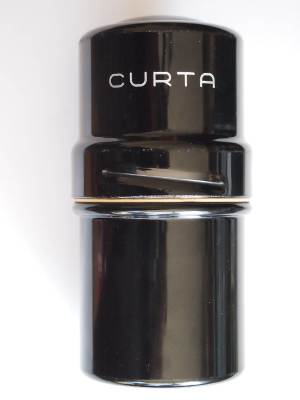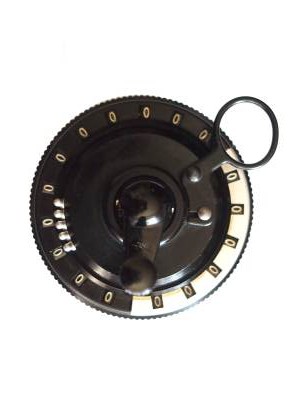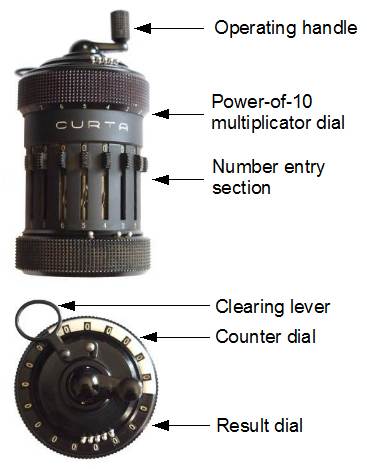| Type, Precision, Input
mode |
Simple, 11 BCD digits, no exponent, fully
mechanical |
| Programmable |
No
|
| Memory |
None |
| Display |
Various dials on the side and the top of the
unit
|
| Special features |
No batteries required!
|
| Original Pricing,
Production |
According to various sources:
Curta I: October 1948 to November 1970, approx. 80,000 units,
serial numbers start at 1, 425 DM (212 Euro) in 1965.
Curta II: January 1954 to November 1970, approx 60,000
units, serial numbers start at 500000, 535 Euro (268 Euro)
|
| Batteries |
None.
|
| Dimensions |
Diameter 5.3cm (with clearing lever retracted),
Height 8.6cm, 10.6cm including operation handle
Capsule: Height 12cm, diameter 6.2cm |
| Links |
www.curta.de
by Jan Meyer offers a wealth of information about the Curta. It
includes a detailled biography of Curt Herzstark who designed the
mechanical masterpiece.
www.vcalc.net
with even more information, among them operation
instructions.
Curta
on Wikipedia.
Curt
Herzstark on Wikipedia.
Manual Gebrauchsanweisung
für die CURTA (PDF, 30 pages, German, courtesy www.curta.de,
May 2003)
|
| Interview
with Curt Herzstark, September 1987, Nendeln, Liechtenstein. Conducted
by Erwin Tomash, Charles Babbage Institute, The Center for the History
of Information Processing, University of Minnesota, Minneapolis.
English version, PDF, 67 pages.
German version, PDF, 86 pages.
|
| Comment |
I had never seen a real Curta before and was surprised how small it was!
The seller, Yehuda from Israel, writes about
his Curta: "I've bought it from MSU professor
Harry Oman's estate at 2007. The
reasons that I have bought it was two: First because my dad (Jacob 85)
has been, as a teenager, at the same concentration camp Buchenwald like
Curt Herzstark, and I'm proud that a Jewish person invented this
wonderful
and genius machine inspite of the condition he was faced with; secondly
because I have been many years a senior CAD engineer
at Intel (more then
30 years) and I adore this first portable mechanical
"computer"."
|
